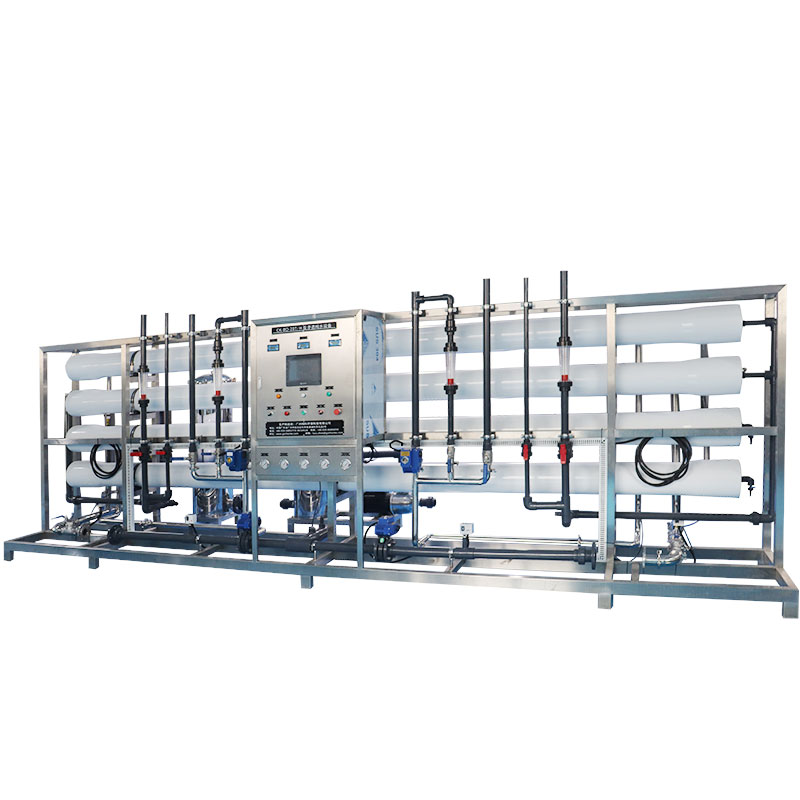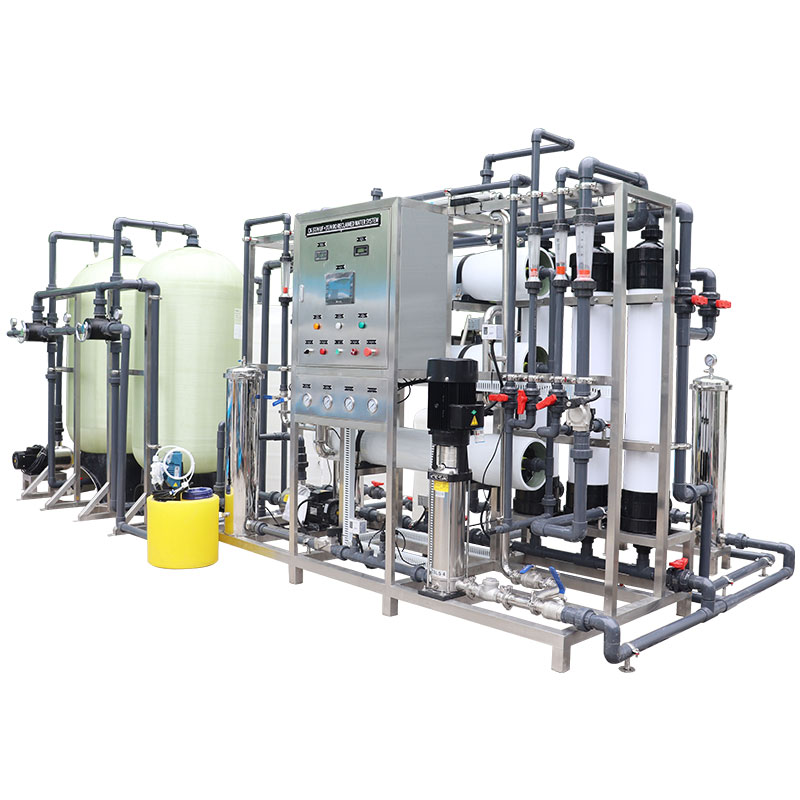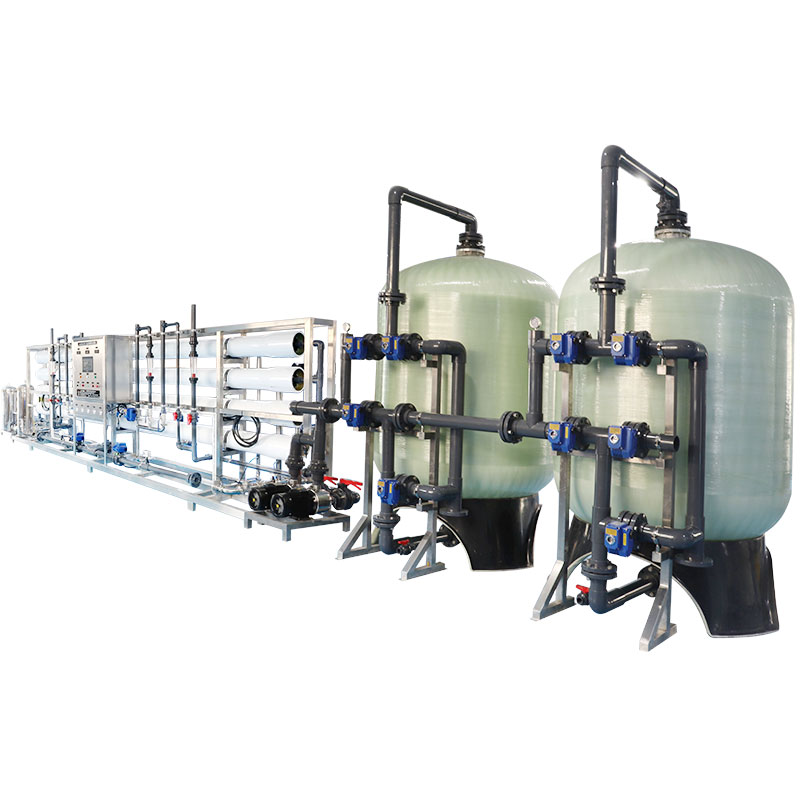What is the best way to filter pond water?
Purification and filtration of pond water is essential to keep the water clean and ensure the health of fish. Pond water often contains a variety of organic matter, suspended particles, and harmful chemicals, which can affect water quality and pose a threat to the survival of fish.
This article will take a deep look at the best way to filter pond water and how to purify pond water to ensure it is suitable for fish farming.

What is the importance of pond water filtration?
In a pond, water quality management is one of the most important tasks in fish farming. Poor water quality can cause fish to experience a variety of health problems, such as difficulty breathing, decreased immunity, and even death. An effective filtration system can remove impurities from the water, control algae growth, stabilize the pH of the water, and maintain proper oxygen levels.
Common suspended matter in pond water includes uneaten bait, fish excrement, wilted plants, and other organic matter. These substances can cause turbidity in the water, affect photosynthesis and the health of aquatic plants, and provide a breeding ground for harmful microorganisms. Excess nutrients, such as nitrogen and phosphorus, can cause algae to multiply rapidly and form algal blooms. Excessive algae growth not only consumes oxygen in the water, but also produces harmful substances that threaten the health of fish.
Fish and other aquatic organisms need sufficient oxygen to survive. The dissolved oxygen content in water is affected by many factors, such as water temperature, plant photosynthesis, and the decomposition of organic matter. A good water circulation and filtration system can ensure sufficient aeration of the water body and increase the dissolved oxygen level.

What is the best way to filter pond water?
There are many ways to filter pond water, each with its own advantages and disadvantages. The selection of the appropriate filtration method should be determined based on the size of the pond, the characteristics of the water body, and the type of fish being raised. The following are some common pond water filtration methods:
Mechanical filtration
Mechanical filtration is the most basic filtration method used to remove solid particles from water. Mechanical filters are usually composed of fine mesh, sponge or felt. When water flows through these filter materials, suspended particles are intercepted and captured.
● Mesh filter: Mesh filters are usually installed at the inlet or outlet of the pond to filter larger particles such as dead leaves, uneaten bait, and fish excrement by physical blocking. This filter is easy to maintain, but needs to be cleaned regularly to prevent clogging.
● Sponge filter: A sponge filter is a common mechanical filter that is particularly suitable for smaller ponds. It consists of a porous sponge that can capture smaller particles and provide a surface for beneficial bacteria to grow. This filter promotes the biological filtration process while keeping the water clean.
● Felt filter: Felt filters have higher filtration accuracy and are suitable for ponds with higher water quality requirements. Felt can capture finer particles such as plankton and suspended particles, maintaining water clarity.
Biological filtration
Biological filtration is the use of beneficial microorganisms to decompose organic matter and harmful chemicals in water, thereby improving water quality. Biological filters are often used in conjunction with mechanical filters to improve filtration efficiency.
● Biofilter: A biological filter is one of the most common biological filtration systems. It is usually filled with porous materials (such as ceramic rings, plastic balls or biological sponges) that provide a large surface area for beneficial bacteria. These bacteria are able to decompose ammonia, nitrites and nitrates in the water, converting them into substances that are harmless to fish.
● Wetland filtration system: Constructed wetland filtration systems use plants and microorganisms to treat pollutants in the water. Plant roots provide a habitat for microorganisms to grow, while microorganisms purify water by breaking down organic matter and absorbing nutrients. This system is very effective in eco-friendly ponds.
● Nitrifying bacteria filter bed: Nitrifying bacteria filter bed is a biological filter specifically designed to remove ammonia nitrogen. Ammonia is the main component of fish excrement and is toxic to fish. Nitrifying bacteria are able to convert ammonia into nitrites and then into nitrates, which are relatively harmless to fish.
Chemical filtration
Chemical filtration is mainly used to remove harmful chemicals and dissolved organic pollutants from water. Common chemical filtration media include activated carbon, ion exchange resins and zeolites.
● Activated carbon filter: Activated carbon is a commonly used chemical filtration media that can absorb organic pollutants, odors, pigments and some dissolved toxic chemicals in water. Activated carbon has a strong adsorption capacity, but needs to be replaced regularly to maintain its effectiveness.
● Ion exchange resin: Ion exchange resin can remove heavy metal ions such as copper, lead and cadmium, as well as calcium and magnesium ions in water, thereby reducing the hardness of water. This process is essential to maintaining water chemical balance and fish health.
● Zeolite filter: Zeolite is a natural mineral with a unique pore structure that can effectively adsorb ammonia and other harmful substances in water. Zeolite filters are particularly suitable for treating water bodies with high ammonia content and are often used in ponds with high fish density.

How to purify pond water for fish farming?
Specific steps for pond water purification for fish farming:
1. Regularly remove debris from the surface of the pond
2. Install and maintain a suitable filtration system
3. Control nutrient input
4. Regularly monitor water quality
5. Perform periodic water changes
Regularly remove debris from the surface of the pond - First of all, keeping the surface of the pond clean is the first step to purify the water quality. Use a net bag regularly to remove floating dead leaves, branches, uneaten bait and other debris. If these debris are not cleaned up in time, they will gradually decompose and increase the organic matter load in the water, causing water quality to deteriorate.
Install and maintain a suitable filtration system - Depending on the size of the pond and the type of fish, it is crucial to choose the right filtration system. For small ponds, simple mechanical and biological filtration systems may be sufficient; for large ponds, complex multi-stage filtration systems may be required, including mechanical, biological and chemical filtration.
● Installation of mechanical filtration: When installing a mechanical filter, make sure that the filter can handle most of the water in the pond and that the filter media is cleaned regularly to prevent clogging and reduced filtration efficiency.
● Maintenance of biological filtration: Biological filters take time to establish a community of beneficial bacteria, so in the early stages of installation, it may be necessary to add bacterial culture to speed up this process. When maintaining biological filters, try to avoid frequent changes of filter media to avoid disrupting the established microbial community.
● Use of chemical filtration: Chemical filtration should be added based on the results of water quality tests. Chemical media such as activated carbon and zeolite should be replaced regularly to ensure their effectiveness.
Control nutrient input - Excess nutrients are the main cause of algae growth and water quality deterioration. Therefore, it is particularly important to control the input of nutrients in the pond. Avoid overfeeding and choose high-quality, easily digestible bait to reduce the nutrient load in fish excrement.
Regularly monitor water quality - In order to ensure that pond water is suitable for fish farming, it is necessary to regularly monitor water quality. Monitoring items include water temperature, pH value, dissolved oxygen content, ammonia nitrogen and nitrite concentrations, etc. According to the monitoring results, timely adjust the filtration system and feeding amount to ensure that the water quality is always within the appropriate range.
Perform periodic water changes in the water body - Regular partial water changes are an effective way to maintain pond water quality. Water changes can dilute pollutants in the water, reduce the concentration of ammonia nitrogen, nitrite and other harmful substances, and replenish trace elements and minerals in the pond. The amount of water change should be determined according to the size of the pond and the density of fish. Generally, the amount of water change per time is controlled between 10% and 20% of the total water volume of the pond.

Conclusion
Filtering and purifying pond water is the key to successful fish farming. Through reasonable mechanical, biological and chemical filtration methods, suspended matter, organic matter and harmful chemicals in the water can be effectively removed, thereby keeping the water quality clean and stable. In addition, regular cleaning of the pond surface, control of nutrient input, regular monitoring of water quality, and periodic water changes are all important steps to ensure that the pond water is suitable for fish farming.
By combining these filtration and purification methods, the pond water can be kept clean and oxygen-rich, providing a healthy living environment for fish. This not only helps to improve the growth rate and survival rate of fish, but also reduces the occurrence of fish diseases, ultimately achieving efficient and sustainable fish farming.




